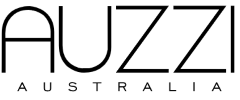Differences in Web Design for B2B vs. B2C

There are many options for buying and selling goods and services online. Whether you are looking to sell your own products and services or purchase those of another business, you will likely be interacting with an e-commerce site. How would you know if you're looking at a B2B or B2C website?
By just looking, we can identify what type of platform we are on. This blog will take us through the differences in web design between these two ecommerce business models. Also, if you need expert web design assistance, consider contacting a web development agency in Melbourne.
What Is B2B and B2C in Ecommerce?
Business-to-business (B2B) refers to online transactions between businesses. Companies buy items or services from other industries to support their operations. B2B transactions are typically greater in scope, involving bulk orders, long-term contracts, and complex pricing systems.
Business-to-consumer (B2C) ecommerce is when businesses sell directly to individual customers. It involves selling products or services directly to customers for personal use. B2C transactions are smaller in scale, with fixed prices and an easy purchasing process. The focus is on meeting individual customers' needs and preferences. B2C eCommerce uses marketing techniques like personalised suggestions, social media ads, and targeted discounts to attract and engage customers.
The Difference Between B2B and B2C Websites
When it comes to building a website, there are distinct differences between B2B (business-to-business) and B2C (business-to-consumer) websites. Let's look at the comparison:
Customised Homepages
B2B websites have a professional homepage design. They include industry news, case studies, and testimonials to establish credibility. B2C websites have visually appealing homepages showcasing products and promotions. They use engaging visuals and persuasive copywriting to attract consumers.
Call-to-Action (CTA)
B2B websites have CTAs that encourage visitors to take certain actions. These actions include requesting a quote, booking a consultation, or signing up for a free trial. On the other hand, B2C websites have CTAs that promote immediate purchases. These CTAs urge visitors to "Add to Cart" or "Buy Now".
Pricing
B2B websites don't always show prices openly. The prices can change based on factors like volume or customisations. B2C websites usually have clear pricing. This makes it easy for consumers to compare options and decide what to buy.
Payment Options
B2B websites often offer flexible payment options like credit terms or purchase orders, customised to the specific needs of the businesses. B2C websites typically provide various payment options, including credit cards, e-wallets, and online payment gateways.
Order Quantity
B2B websites may have minimum or maximum order quantities for wholesale or bulk purchases. These restrictions exist to ensure profitability and cover the costs of serving business clients. B2C websites do not usually impose such limitations.
Purchase Process
B2C websites have easy checkout processes for quick purchases. They focus on convenience and user-friendliness. In contrast, B2B websites have complex products or services that require a detailed checkout process. This process may involve negotiations, contracts, and additional documentation.
Content and Information
B2B websites give detailed information about products or services. They have technical specifications, product descriptions, whitepapers, case studies, and other resources to showcase expertise and help buyers. B2C websites have simpler product descriptions and focus on visuals like images and videos.
Shipping Choices
B2C websites put significant effort into providing multiple shipping options, including express delivery, next-day delivery, or even free shipping. B2B websites, especially those dealing with larger and more complex products, may have specific shipping arrangements, such as freight or logistics coordination, to accommodate business customers' particular needs.
Product Offering
B2B websites have a wide range of products compared to consumer websites. They cater to specific markets or specialities. These websites offer personalisation or specialised solutions for enterprises. In contrast, business-to-consumer websites focus on offering a variety of consumer goods that appeal to a large audience.
Marketing and Advertising Strategies
B2B websites use targeted marketing efforts to reach business clients. This includes industry-specific publications, trade shows, and networking events. B2C websites, on the other hand, use advertising techniques to reach and engage consumers. These techniques include social media marketing, influencer partnerships, and email campaigns.
Target Audience
B2B websites target businesses or professionals. They focus on relationships and credibility. B2C websites target consumers. They use advertising and marketing to appeal to different demographics.
Data Security
Because these websites handle sensitive business information, data security is strongly emphasised in the B2B setting. B2C websites, on the other hand, while considering data security crucial, frequently emphasise securing user data and assuring privacy protection.
Final Thoughts
Both models cater to different needs in the digital marketplace. Businesses and individual consumers have different requirements. Understanding these differences is essential for creating a successful online presence and meeting the expectations of your target audience, whether they are companies or global consumers.

